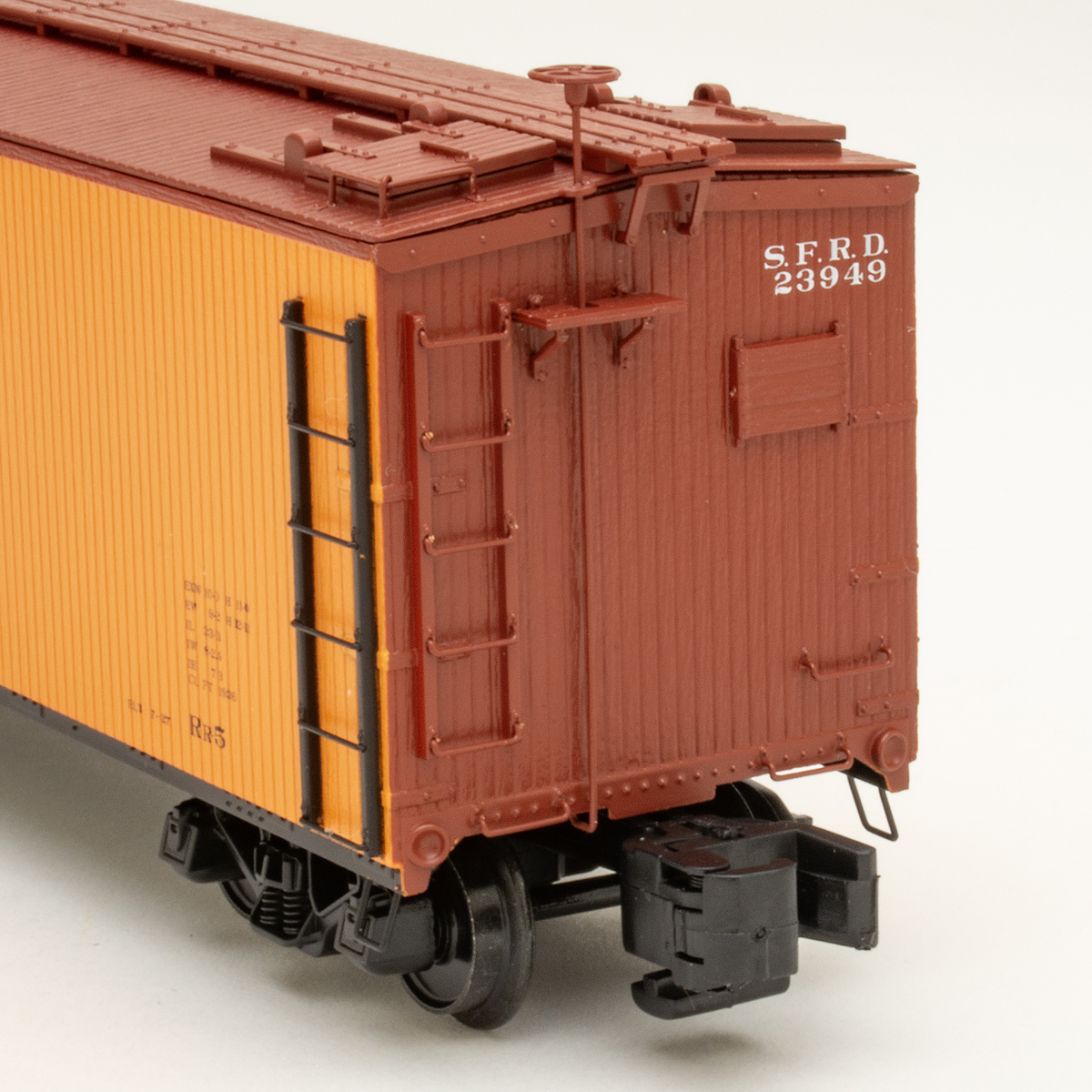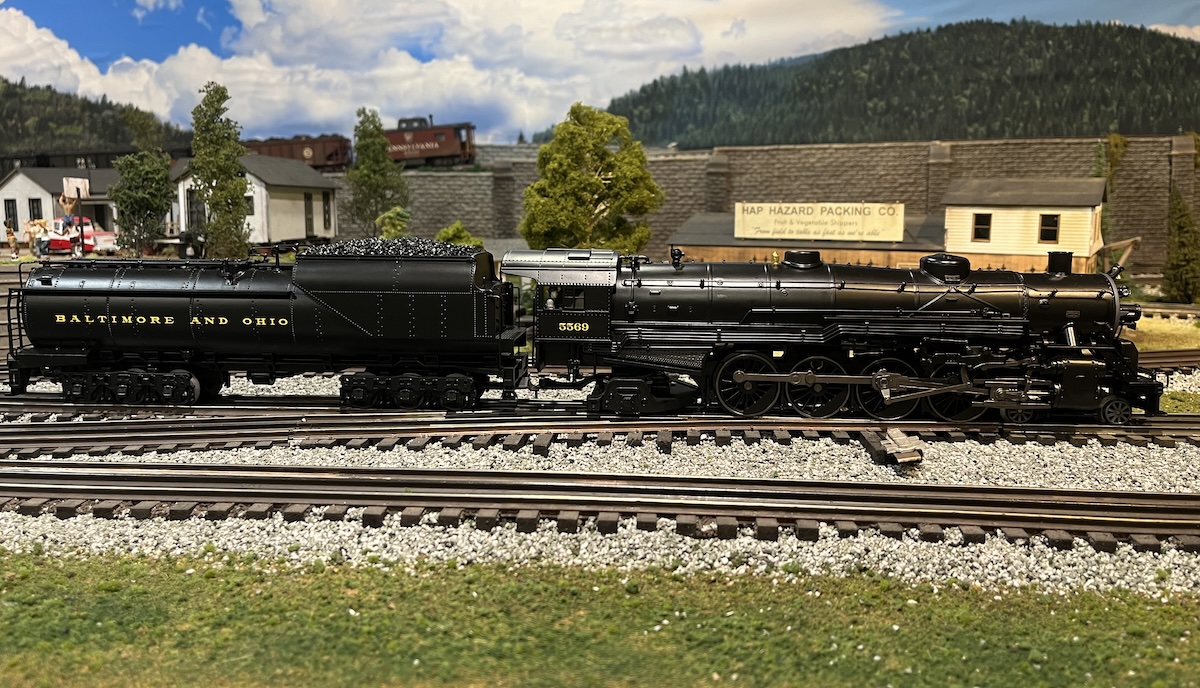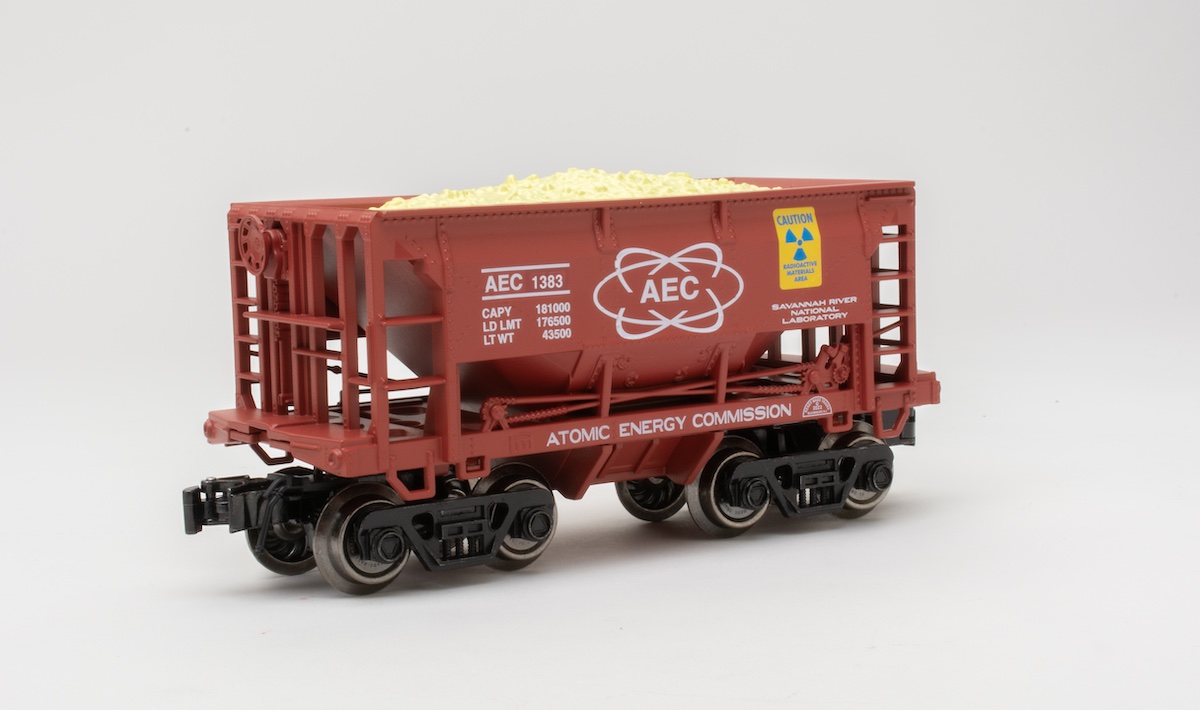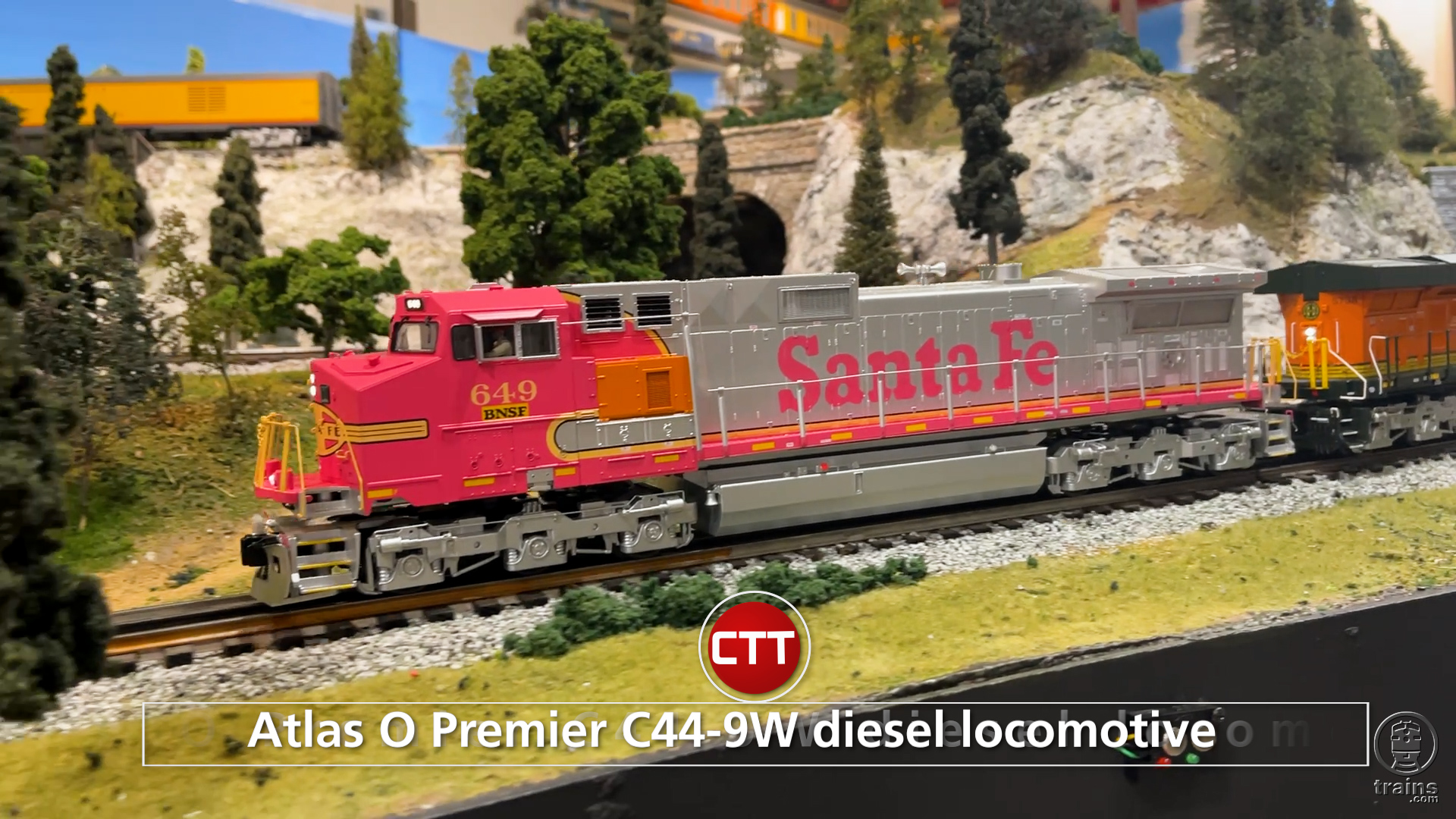This is the first articulated engine ever produced by Lionel. It is the largest engine ever done by the firm and may even surpass the fabled no. 700E scale Hudson in its amount of prototypical detail. This locomotive is as dramatic a break from the past as was the 700E Hudson in the prewar years.
Lionel picked a doozy of a steamer to inaugurate its new line of scale-detailed locomotives: one of the Lima Locomotive Works’ finest super-powered products, the 2-6-6-6 Allegheny.
Hauling coal over mountainous terrain is rugged business, and the Chesapeake & Ohio was certainly in the thick of it. The railroad experimented with locomotives of various wheel arrangements from 2-8-8-2s to 2-10-4s with moderate success. When rival Norfolk & Western proved that a high-drivered (70-inch) articulated engine was equal to the task of mountain railroading, the C&O went to Lima for help in creating a new type of engine.
In the 1930s Lima proposed a two-cylinder 2-12-6 locomotive to replace the C&O’s 2-8-8-2 engines. The six-wheeled trailing truck allowed the engine to have a much larger firebox for greater heat generation. Even if certain technical limitations could have been resolved, the curves on the railroad’s mainline prevented serious consideration of a 2-12-6.
What was delivered to the road in 1941, however, amounted roughly to a “de-coupled” 2-12-6: in short, a 2-6-6-6.
The Allegheny, as it was called, was more than 125 feet long and weighed more than 750,000 pounds. Tractive force was rated at 110,000 pounds, and it could easily haul a 160-car train. The performance was so commendable that the C&O’s neighbor and fellow coal hauler, the Virginian Ry., ordered eight of the Allegheny giants in 1948.
During its years of operation, the Allegheny could be found at the head of virtually any type of train, from long, heavy coal drags to general merchandise trains. The Allegheny was no stranger to varnish, and World War II found it pulling heavy troop trains, prisoner trains, and hospital trains. In fact, 21 of the engines were equipped with steam heat systems for passenger use. In spite of the fact that this behemoth looks too large to sprint, Eugene Huddleston’s book The Allegheny: Lima’s Finest, suggests that the Alleghenys were at least as fast as some of the C&O’s passenger locomotives.
The C&O’s 60 engines remained in service until mid-1956, while the Virginian’s eight engines were retired in 1955 and scrapped in January 1960.
In the O gauge realm, Right-of-Way offered a brass version of the Allegheny in 1996, and MTH offered die-cast metal models for its Premier line in 1996 and its RailKing line in 1997.
In something of a marketing coup, Lionel announced the engine in the 1999 Vol. 2 catalog with a projected deliver date before Christmas. The engine was actually in the hands of some consumers before the fall 1999 TCA divisional meet at York, Pa. Early deliveries helps restore credibility to Lionel’s production and delivery schedule.
The number of locomotives produced is intentionally low. Lionel’s marketing staff decided to underproduce the Allegheny in this venture into scale-like steam power to avoid a blow-out sale on the firm’s website as has happened with some other products.
Lionel staffers didn’t need to worry. Sales of this engine would have been brisk under any circumstances.
The Allegheny breaks new ground for Lionel. Never before has the firm attempted such a large scale-detailed locomotive, an articulated engine at that. Even such excellent LTI-era steam engines as the Reading T-1 come in second to this locomotive.
First things first! Upon opening the box and handling the engine, you notice the weight of this prize. The engine and tender come in at a whomping 18 pounds!
This engine is a monster. Including the oversized rear coupler, the coupler-to-coupler measurement of the engine and tender is 311/2 inches (126 scale feet) compared to the prototype’s length of 125 feet, 7 inches.
Paint application and decoration of the engine are superb. All paint was evenly applied and was silky smooth.
The tooling is superb, and I noted no defects in the finished product or the decoration. For me, the most eye-catching features are the front of the engine and the deck above the pilot. The arrangement of the deck, handrails, and headlight are terrific. The C&O herald, which always brings to mind countless hopper cars rolling through grade crossings, is sharp and clear. On both sides of the smokebox you’ll find some impressive compressors. Other fine elements include the gold bell on the nose, the twin smokestacks, and the whistle that leans at a rakish angle. The boiler has a great amount of cast-in and added-on pipes. Near the cab you’ll find two torpedo-like air reserves.
The smoke units rival the torrential output of MTH units. It won’t take much operation of this engine to get a dull white haze wafting through your train room. Smoke unit and command control program/run switches are located beneath the cab. You’ll want to note that the greatest smoke unit output will occur during command control operation because of the steady 18-volt output to the track. Running at lower voltages affects the level of smoke.
Operation and sound
Placing this engine on the track, you’ll note something is missing. At last, the umbilical cord has been severed! Without fear of being challenged, I’ll declare the wireless tether to be the 21st century’s best idea to improve the quality of life for train operators. Gone are the oh-so-annoying-to-plug-in wires. Gone are the too-short, too-rigid wires that cause engines to derail on tight turns. Gone is the unsightly wire dangling between the cab and tender on higher-end Lionel products.
Make no mistake about it, this is one tough looking locomotive. But okay, you ask, so the engine looks good, how does it perform?
Like a dream.
The engine glided around the layout like Fred Astaire and Ginger Rogers on the dance floor: graceful, impressive, and drawing the adoration of the crowd.
Once all the rods were lubricated, the engine operated smoothly in all speed ranges on both level track and slight grades. Our low speed average was 26.6 scale mph, while on the high end the Allegheny averaged 92.9 scale mph. The engine was sure-footed, and at no time did the wheels slip, no matter what load was coupled behind this beast.
The engine drawbar pull was superb, measuring 3 pounds, 8 ounces, which equates to more than 200 modern, free-rolling pieces of rolling stock on straight and level track.
Only when using an MTH Z-4000 transformer did we encounter any glitches. For some unexplained reason, the engine twice balked at starting when under Z-4000 power. This had us scratching our heads for a few minutes, but the train pixies decided to leave and let us resume our fun.
As always, the RailSounds system was a delight. The chuff rates (one for each set of drivers) is variable according to the speed of the engine, and, insofar as toy trains go, the rhythm seemed to be right on target. This is impressive.
We did hear some sputters from the sound system at the lowest voltages (when starting or stopping the engine). Although these recurred, they seemed sporadic and didn’t especially interfere with enjoyment of the train.
Each time you trigger the whistle, it blows one of a half, dozen or more unique whistle sounds. The bell was loud and clear, and it is one of those sound effects that had our eyes darting toward the door of our second floor workshop, half expecting someone from the downstairs accounting office to walk in and complain about the noise!
The system also features shutdown sounds that are assisted, as in all RailSounds systems, by a 9-volt battery. The RailSounds on/off switch and volume control are located beneath the tender.
Is this an engine for collectors or operators? That’s hard to say. Price is certainly a consideration, and this Korean import was made in small enough numbers to leave hobbyists wanting more.
That alone will keep the price for Lionel Alleghenys on the secondary market way up. However, anyone who invests nearly $1,400 in this engine and leaves it in the box or in a display case is crazy.
This is an operator’s locomotive!
Sure, you can keep it in mint shape for 20 years and then sell it to some 16-year-old software king and maybe make $200 on the deal. But by doing that, you will have missed out on one great high-balling experience. You’ll have far more fun running this testosterone-soaked monster than sitting around looking at a big unopened hunk of orange cardboard!














